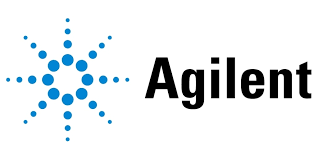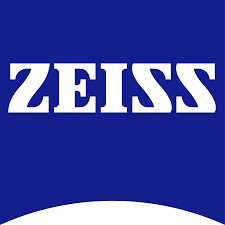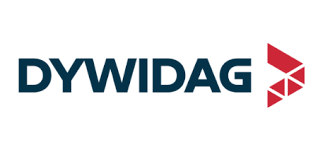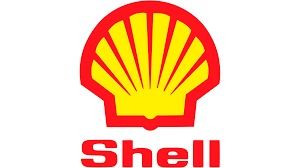Vacuum Grease Market Report
Published Date: 02 June 2025 | Report Code: vacuum-grease
Vacuum Grease Market Size, Share, Industry Trends and Forecast to 2033
This report provides a comprehensive analysis of the Vacuum Grease market, focusing on market size, trends, and forecasts from 2023 to 2033. Key insights on industry segmentation, regional performance, and competitive landscape are also highlighted.
| Metric | Value |
|---|---|
| Study Period | 2023 - 2033 |
| 2023 Market Size | $1.50 Billion |
| CAGR (2023-2033) | 6.2% |
| 2033 Market Size | $2.78 Billion |
| Top Companies | Dow Chemical Company, Fuchs Petrolub SE, MOLYKOTE (a subsidiary of DuPont), Shell PLC |
| Last Modified Date | 02 June 2025 |
Vacuum Grease Market Report (2023 - 2033)
Vacuum Grease Market Overview
Customize Vacuum Grease Market Report market research report
- ✔ Get in-depth analysis of Vacuum Grease market size, growth, and forecasts.
- ✔ Understand Vacuum Grease's regional dynamics and industry-specific trends.
- ✔ Identify potential applications, end-user demand, and growth segments in Vacuum Grease
What is the Market Size & CAGR of Vacuum Grease market in 2023?
Vacuum Grease Industry Analysis
Vacuum Grease Market Segmentation and Scope
Tell us your focus area and get a customized research report.
Vacuum Grease Market Analysis Report by Region
Europe Vacuum Grease Market Report:
The European market for Vacuum Grease is forecasted to grow from $0.40 billion in 2023 to $0.74 billion by 2033. Europe is a key market due to stringent quality standards in the automotive and aerospace sectors, necessitating advanced lubrication solutions.Asia Pacific Vacuum Grease Market Report:
In the Asia-Pacific region, the market for Vacuum Grease was valued at approximately $0.29 billion in 2023, expected to grow to $0.53 billion by 2033. This growth is attributed to booming electronic manufacturing and automotive industries, particularly in China and Japan, which are major contributors to the global market.North America Vacuum Grease Market Report:
North America holds a significant share of the Vacuum Grease market, with a valuation of $0.58 billion in 2023 projected to increase to $1.07 billion by 2033. The region's growth is propelled by its robust aerospace and electronics industries, where high-performance lubricants are paramount.South America Vacuum Grease Market Report:
The South American Vacuum Grease market, valued at $0.11 billion in 2023 with an estimated growth to $0.21 billion by 2033, is influenced by the expanding pharmaceutical and mining sectors. Increasing investment in infrastructure also supports the regional market expansion.Middle East & Africa Vacuum Grease Market Report:
In the Middle East and Africa, the Vacuum Grease market is anticipated to grow from $0.13 billion in 2023 to $0.24 billion by 2033, primarily driven by infrastructural development and oil & gas exploration activities requiring effective lubrication solutions.Tell us your focus area and get a customized research report.
Vacuum Grease Market Analysis By Product Type
Global Vacuum Grease Market, By Product Type Market Analysis (2024 - 2033)
The Vacuum Grease market is significantly influenced by product types, including bio-based grease, silicone grease, and conventional grease. Bio-based grease is leading in terms of market share, expected to grow from $1.30 billion in 2023 to $2.40 billion by 2033, accounting for 86.38% share. Silicone and fluorinated greases follow closely, both representing vital sectors in applications requiring high thermal stability.
Vacuum Grease Market Analysis By Application
Global Vacuum Grease Market, By Application Market Analysis (2024 - 2033)
From an applications perspective, the Semiconductors sector leads the Vacuum Grease market, valued at $1.00 billion in 2023 and expected to reach $1.86 billion by 2033, holding a 66.81% share. Other notable applications include pharmaceuticals and aerospace, which together showcase the diverse utility of vacuum grease in critical industries.
Vacuum Grease Market Analysis By End User Industry
Global Vacuum Grease Market, By End-User Industry Market Analysis (2024 - 2033)
The end-user industry analysis reveals that electronics and aerospace dominate the Vacuum Grease market, with respective shares of 66.81% and 21.23%. The electronics sector's reliance on precision lubrication in manufacturing processes ensures its leading market position, projected to grow significantly through innovative product offerings.
Vacuum Grease Market Analysis By Formulation
Global Vacuum Grease Market, By Formulation Market Analysis (2024 - 2033)
The formulation segment illustrates a growing preference for bio-based and synthetic lubricants over conventional options. Bio-based formulations are anticipated to grow substantially, reflecting consumer trends towards sustainable products that do not compromise performance.
Vacuum Grease Market Analysis By Distribution Channel
Global Vacuum Grease Market, By Distribution Channel Market Analysis (2024 - 2033)
Direct sales continue to dominate the distribution channels in the Vacuum Grease market, with a significant share supported by partnerships with manufacturers and bulk supply agreements. E-commerce is gaining traction, especially post-pandemic, enhancing accessibility for customers seeking specific vacuum grease solutions.
Vacuum Grease Market Trends and Future Forecast
Tell us your focus area and get a customized research report.
Global Market Leaders and Top Companies in Vacuum Grease Industry
Dow Chemical Company:
A leading player in the specialized grease market, Dow offers innovative silicone and bio-based grease solutions catering to high-demand industries.Fuchs Petrolub SE:
Known for its extensive range of lubricant products, Fuchs delivers high-quality vacuum grease tailored for various industrial applications.MOLYKOTE (a subsidiary of DuPont):
Provides advanced lubrication solutions, specializing in vacuum grease for electronics and aerospace applications due to their expertise in polymer technologies.Shell PLC:
A global energy company that supplies a wide range of lubricants, including high-performance vacuum greases designed for demanding environments.We're grateful to work with incredible clients.









FAQs
What is the market size of vacuum Grease?
The vacuum grease market is currently valued at approximately $1.5 billion and is projected to grow at a CAGR of 6.2% through 2033. This growth reflects increasing demand and advancements in technology within various sectors utilizing vacuum grease.
What are the key market players or companies in this vacuum Grease industry?
Key players in the vacuum grease industry include major manufacturers and brands known for their high-quality greases. These companies typically dominate due to their innovative products, extensive distribution channels, and strong customer relationships across various industrial sectors.
What are the primary factors driving the growth in the vacuum grease industry?
Growth in the vacuum grease market is driven by increasing industrial automation, advancements in manufacturing processes, and rising demand from sectors like semiconductors and pharmaceuticals that require high-performance lubrication solutions for optimal machinery operation.
Which region is the fastest Growing in the vacuum grease market?
North America is the fastest-growing region in the vacuum grease market, with a market size projected to increase from $0.58 billion in 2023 to $1.07 billion by 2033. This growth is fueled by technological advancements and high demand in electronics and aerospace.
Does ConsaInsights provide customized market report data for the vacuum grease industry?
Yes, ConsaInsights offers customized market report data tailored to specific needs in the vacuum grease industry. This service includes detailed insights, market trends, and projections based on client requirements to assist in strategic decision-making.
What deliverables can I expect from this vacuum grease market research project?
Deliverables from a vacuum grease market research project typically include comprehensive reports on market size, growth forecasts, competitive analysis, regional insights, and segmentation data to provide a well-rounded understanding of market dynamics.
What are the market trends of vacuum grease?
Current market trends in the vacuum grease sector include a shift towards bio-based and eco-friendly greases, advancements in synthetic formulations that enhance thermal stability, and growing applications in high-tech industries such as semiconductors and renewable energy sectors.
